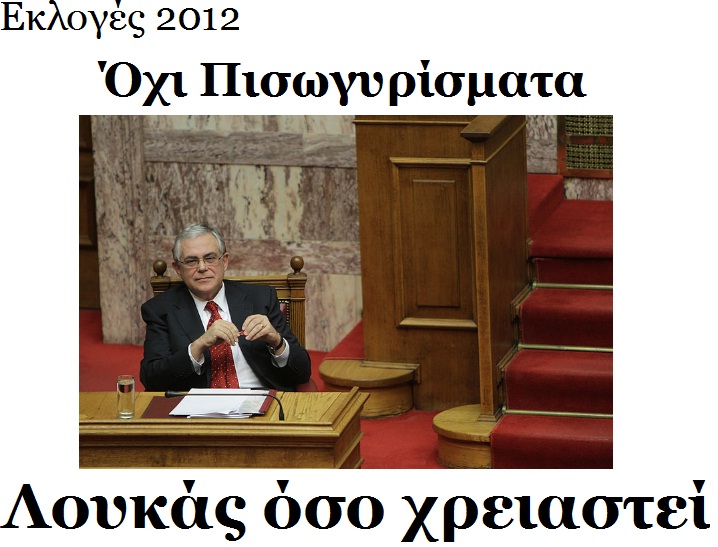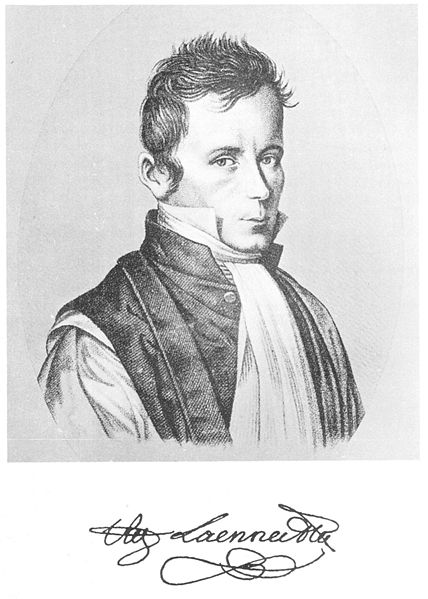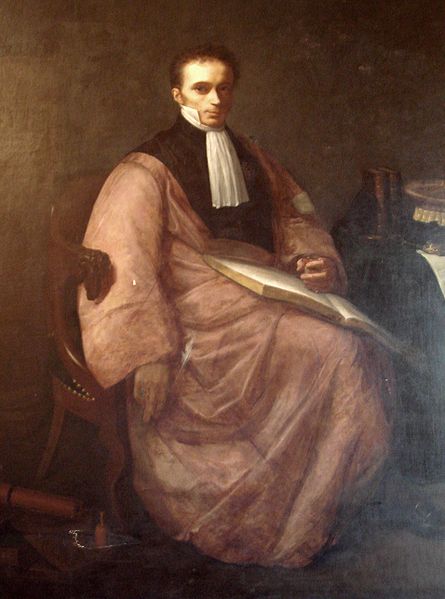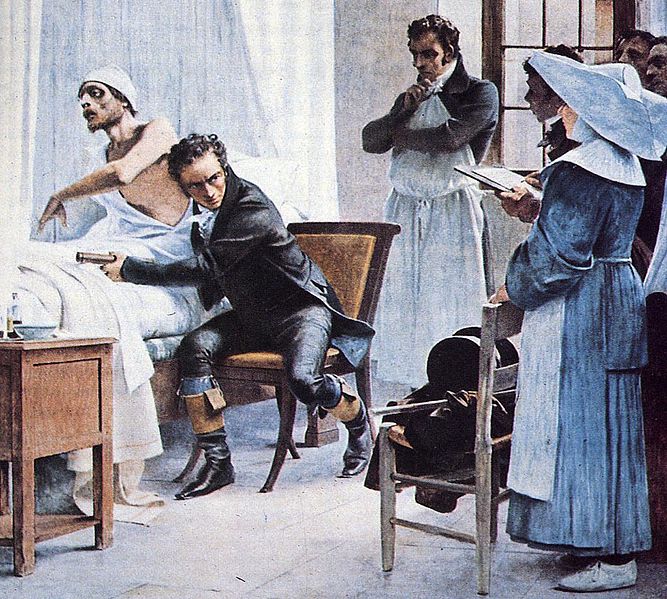<Back to Index>
- Physician René Théophile Hyacinthe Laennec, 1781
- Composer Arcangelo Corelli, 1653
- General Otto Liman von Sanders, 1855
PAGE SPONSOR



René-Théophile-Hyacinthe Laennec (February 17, 1781 – August 13, 1826) was a French physician. He invented the stethoscope in 1816, while working at the Hôpital Necker and pioneered its use in diagnosing various chest conditions.
He
became a lecturer at the Collège de France in 1822 and professor
of medicine in 1823. His final appointments were that of Head of the
Medical Clinic at the Hôpital de la Charité and Professor at the Collège de France. He died of tuberculosis in 1826.
Laennec was born in Quimper (Brittany). His mother died of tuberculosis when he was five or six, and he went to live with his grand uncle the Abbé Laennec (a priest). At the age of twelve he proceeded to Nantes where his uncle, Guillaime-François Laennec, worked in the faculty of medicine at the university. Laennec was a gifted student, he learned English and German, and began his medical studies under his uncle's direction.
His father (a lawyer) later discouraged him from continuing as a doctor and René then had a period of time where he took long walks in the country, danced, studied Greek and wrote poetry. However, in 1799 he returned to study. Laennec studied medicine in Paris under several famous physicians, including Dupuytren and Nicolas Corvisart des Marest. There he was trained to use sound as a diagnostic aid. Corvisart advocated the re-introduction of percussion, a neglected diagnostic technique based on sound developed by Leopold Auenbrugger in 1761
René Laennec was a practicing surgeon in Nantes during the French Revolution. Laennec was a devout Catholic. He was noted as a very kind man and his charity to the poor became proverbial.
Laennec wrote the classic treatise De l'Auscultation Médiate, published in August 1819. The preface reads:
In 1816, I was consulted by a young woman laboring under general symptoms of diseased heart, and in whose case percussion and the application of the hand were of little avail on account of the great degree of fatness. The other method just mentioned [direct auscultation] being rendered inadmissible by the age and sex of the patient, I happened to recollect a simple and well known fact in acoustics, . . . the great distinctness with which we hear the scratch of a pin at one end of a piece of wood on applying our ear to the other. Immediately, on this suggestion, I rolled a quire of paper into a kind of cylinder and applied one end of it to the region of the heart and the other to my ear, and was not a little surprised and pleased to find that I could thereby perceive the action of the heart in a manner much more clear and distinct than I had ever been able to do by the immediate application of my ear.
Laennec had discovered that the new stethoscope was
superior to the normally used method of placing the ear over the chest,
particularly if the patient was overweight. A stethoscope also avoided
the embarrassment of placing the ear against the chest of a woman.
Laennec is said to have seen schoolchildren playing with long, hollow sticks in the days leading up to his innovation. The children held their ear to one end of the stick while the opposite end was scratched with a pin, the stick transmitted and amplified the scratch. His skill as a flautist may also have inspired him. He built his first instrument as a 25 cm by 2.5 cm hollow wooden cylinder, which he later refined to comprise three detachable parts.
His clinical work allowed him to follow chest patients from bedside to the autopsy table. He was therefore able to correlate sounds captured by his new instruments with specific pathological changes in the chest, in effect pioneering a new non-invase diagnostic tool. Laennec was the first to classify and discuss the terms rales, rhonchi, crepitance, and egophony - terms that doctors now use on a daily basis during physical exams and diagnoses. In February 1818, he presented his findings in a talk at the Academie de Medecin, later publishing his findings in 1819.
Laennec coined the phrase mediate auscultation, (indirect listening) as opposed to the popular practice at the time of directly placing the ear on the chest (immediate auscultation). He named his instrument the stethoscope, from stethos (chest), and skopos (examination).
Not all doctors readily embraced the new stethoscope. Although the New England Journal of Medicine reported the invention of the stethoscope two years later, in 1821, as late as 1885 a professor of medicine stated, "He that hath ears to hear, let him use his ears and not a stethoscope." Even the founder of the American Heart Association, L. A. Connor (1866 - 1950) carried a silk handkerchief with him to place on the wall of the chest for ear auscultation.
Laennec often referred to the stethoscope as "the cylinder," and as he neared death only a few years later, he bequeathed his own stethoscope to his nephew, referring to it as "the greatest legacy of my life."
The modern binaural stethoscope with two ear pieces, was invented in 1851 by Arthur Leared. George Cammann perfected the design of the instrument for commercial production in 1852, which has become the standard ever since.
He developed the understanding of peritonitis and cirrhosis. Although the disease of cirrhosis was known, Laennec gave cirrhosis its name, using the Greek word (kirrhos, tawny) that referred to the tawny, yellow nodules characteristic of the disease.
He originated the term melanoma and described metastases of melanoma to the lungs. In 1804, while still a medical student, he was the first person to lecture on melanoma. This lecture was subsequently published in 1805. Laennec actually used the term 'melanose,' which he derived from the Greek (mela, melan) for "black." Over the years, there were bitter exchanges between Laennec and Dupuytren, the latter objecting that there was no mention of his work in this area and his role in its discovery.
He also studied tuberculosis. Ironically, his nephew Mériadec Laennec, is said to have diagnosed tuberculosis in Laennec using Laennec’s stethoscope.
Laennec advocated objective scientific observation. Professor Benjamin Ward Richardson stated in Disciples of Aesculapius that
"the true student of medicine reads Laennec's treatise on mediate
auscultation and the use of the stethoscope once in two years at least
as long as he is in practice. It ranks with the original work of Vesalius, Harvey and Hippocrates."
- Laennec's cirrhosis refers to the appearance of regenerated liver, comprising small lobules separated by a fine, fibrous tissue; Laennec's thrombus is an antenatal thrombus in the heart
- Laennec's pearls refer to sputum produced by asthmatics.
- Hamman's murmur, also known as Laënnec - Hamman symptom, Laënnec - Müller - von Bergmann - Hamman symptom, or Hamman's crunch is a crunching sound heard over the precordium due to spontaneous mediastinal emphysema.
- At the Université Claude Bernard Lyon 1 one of the four medical schools is named after Laennec.
